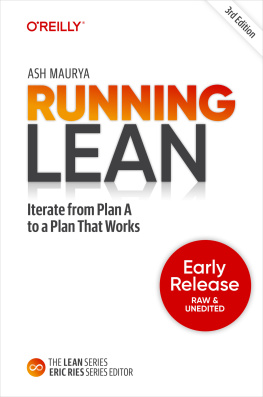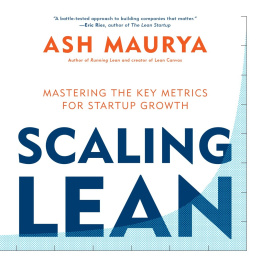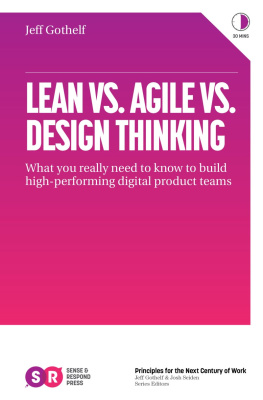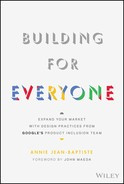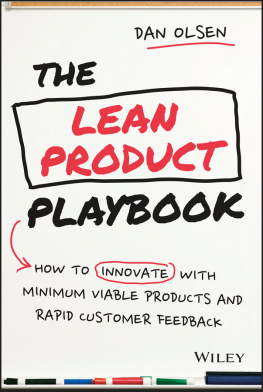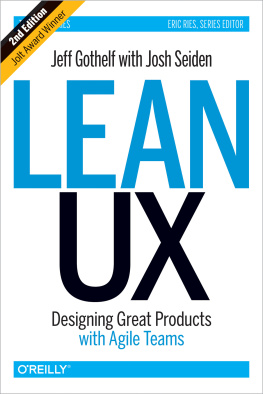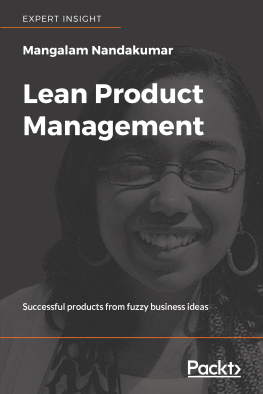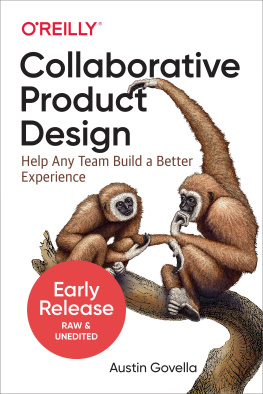Ash Maurya - Running Lean: Iterate from Plan A to a Plan That Works
Here you can read online Ash Maurya - Running Lean: Iterate from Plan A to a Plan That Works full text of the book (entire story) in english for free. Download pdf and epub, get meaning, cover and reviews about this ebook. year: 2022, publisher: OReilly Media, genre: Home and family. Description of the work, (preface) as well as reviews are available. Best literature library LitArk.com created for fans of good reading and offers a wide selection of genres:
Romance novel
Science fiction
Adventure
Detective
Science
History
Home and family
Prose
Art
Politics
Computer
Non-fiction
Religion
Business
Children
Humor
Choose a favorite category and find really read worthwhile books. Enjoy immersion in the world of imagination, feel the emotions of the characters or learn something new for yourself, make an fascinating discovery.
- Book:Running Lean: Iterate from Plan A to a Plan That Works
- Author:
- Publisher:OReilly Media
- Genre:
- Year:2022
- Rating:3 / 5
- Favourites:Add to favourites
- Your mark:
Running Lean: Iterate from Plan A to a Plan That Works: summary, description and annotation
We offer to read an annotation, description, summary or preface (depends on what the author of the book "Running Lean: Iterate from Plan A to a Plan That Works" wrote himself). If you haven't found the necessary information about the book — write in the comments, we will try to find it.
Were building more products today than ever before, but most of them fail--not because we cant complete what we want to build but because we waste time, money, and effort building the wrong product. What we need is a systematic process for quickly vetting product ideas and raising our odds of success. Thats the promise of Running Lean.
In this inspiring book, Ash Maurya takes you through an exacting strategy for achieving a product/market fit for your fledgling venture. Youll learn ideas and concepts from several innovative methodologies, including the Lean Startup, business model design, design thinking, and Jobs-to-be-Done. This new edition introduces the continuous innovation framework and follows one entrepreneurs journey to uncover, design, and build a product that matters.
- Know when to pivot by changing your plans course
- Maximize your efforts for speed, learning, and focus
- Learn the ideal time to raise your big round of funding
- Find a problem worth solving, then define a solution
- Engage your customers throughout the development cycle
- Continually test your product with smaller, faster iterations
- Build a feature, measure customer response, and verify or refute the idea
Ash Maurya: author's other books
Who wrote Running Lean: Iterate from Plan A to a Plan That Works? Find out the surname, the name of the author of the book and a list of all author's works by series.

